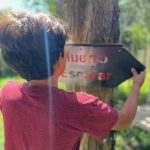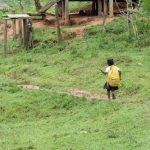Welcome to the Jungle, Bosawás, Nicaragua
Located off-grid and off the beaten path, the Bosawás Biosphere Reserve and its remote jungle landscape is home to Miskito and Mayagna Indigenous peoples, protectors of the largest tract of rainforest outside the Amazon. Over the next few weeks, let us take you on a journey to visit both this place, where the need for clean water is critical, and the people who call it home.
To reach the Bosawás, the Coco River that carves out the border between Nicaragua and Honduras carries our team toward the Caribbean Sea. The motorized dugout canoe is expertly commandeered by drivers who know every meander, every landmark, every low spot between where the roads run out and where the Indigenous territory begins 8-hours downstream. Having lived along the banks of the Coco River for centuries subsistence farming, fishing, and hunting, the Indigenous peoples carry both a deep knowledge of and also respect for the traditional territory we visit.

Hours beyond the agricultural frontier, the landscape turns lush – hundreds of species of birds, plants, and mammals within its jungle cloak. Between stretches of dense forest, houses built on stilts dot the banks and mark small villages where children navigate longboats along the river’s edge and gleefully jump from rocks into the murky water, where women wash clothes, and where youngsters bathe and splash and play.

It is here that farmers use traditional methods to plant and harvest rice, beans, and corn, where midwives and traditional medicine practitioners use plants, roots, and the forest’s bounty in their work as carers of community, and where the land and the protection of it continues to be central to cultural identity.
It is a seemingly simple life, but not without its challenges. The people here face land encroachment by non-Indigenous settlers, threat of natural disasters (most recently, two hurricanes devastated the region in 2020), and marginalization from centralized services.
It is also here where, in too many cases, dirty water stands in for safe drinking water for families.

For some, water is collected directly from local streams or the Coco River – both representing water sources with high levels of bacterial contamination. (During two site visits, EOS found ALL of the ten drinking water sources sampled to be contaminated). For others, existing piped water system infrastructure has suffered extensive damage, and communities lack the funds and the organization required to perform critical repairs.
In partnership and in the company of the Indigenous government and community leaders, many jungle miles have been covered by EOS, investigating measures to bring clean water consistently within reach for communities in the Bosawás and building the capacity of the Miskito people to effectively manage, to plan, and to maintain water systems.
In the coming weeks, we are excited to share how you can reach out to help ensure the availability of safe drinking water even in hard-to-reach places like the Bosawás.





